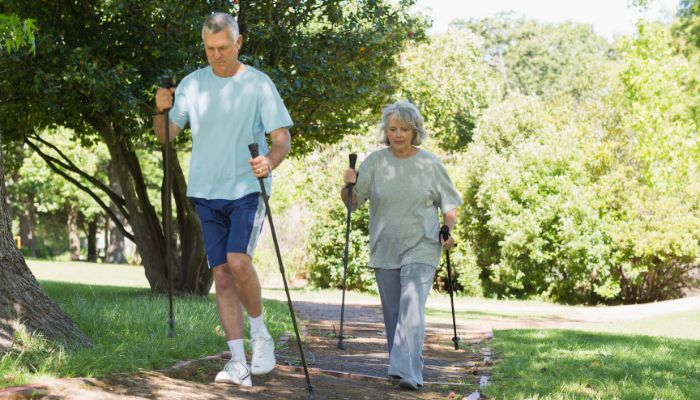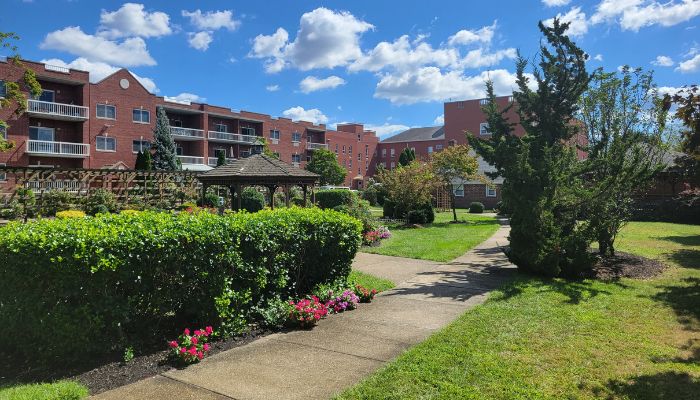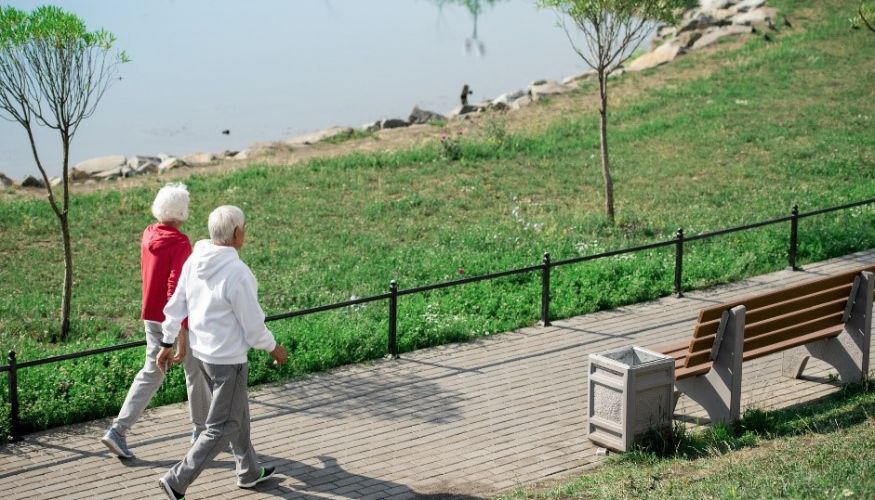Taking a walk offers much more than just a way to get from point A to point B, and when done regularly, it serves as a perfect low-impact exercise. There are many health benefits of walking for individuals of all ages, and can significantly enhance one’s quality of life, both physically and mentally. Creating and maintaining an enjoyable walking routine can positively impact your overall health and wellness – take advantage of these tips.
Walking Your Way to Better Physical Health
Incorporating walking into your daily routine helps improve cardiovascular fitness, strengthens muscles and bones, and boosts flexibility and balance, which are crucial for preventing falls. Additionally, walking helps maintain a healthy weight and can alleviate chronic conditions such as arthritis and hypertension. Furthermore, it promotes better circulation and enhances mobility, allowing seniors to maintain independence and engage more actively in their daily lives.

A Pathway to Better Mental Health
People go for walks for many different reasons, whether it’s to enjoy the outdoors, clear their minds, or exercise their dog. There are numerous mental health benefits of walking, including the reduction of anxiety and depression. This is largely attributed to the release of endorphins, which help relax the body and boost your mood. Additionally, walking with friends provides an excellent opportunity for social interaction and connection, helping to alleviate feelings of loneliness.
7 Simple Steps to Creating an Effective Walking Routine
The best way to maintain a routine is to understand what you want to achieve. Prepare for it as best you can, ensuring it’s not only enjoyable but also flexible enough to fit into your schedule. Here are 7 easy steps to help get you started:
1. Set Realistic Goals
Start small. Aim for 10-15 minutes a day and gradually increase your time as you build endurance. A daily goal of 30 minutes is beneficial, but don’t push yourself too hard. The key is to set realistic goals and have fun while doing it!
2. Choose the Right Footwear
Investing in a good pair of walking shoes can make a significant difference. Look for comfortable footwear with adequate support and cushioning to protect your feet and joints.

3. Consider Walking Poles
Walking poles provide added stability and balance, reducing the risk of falls while walking. Additionally, they promote upper body strength and improve posture, making walks more comfortable and enjoyable.
4. Find a Safe Walking Route
Select a flat, well-lit area to walk, whether it’s a local park, a quiet neighborhood, or the beautiful grounds of Plattduetsche Home Society! Always prioritize safety over convenience and let a friend or family member know you are going for a walk with a quick call or text message.
5. Keep it Interesting
To keep things interesting, try varying your route or adding intervals of brisk walking to your routine. You can also incorporate light stretching or strength exercises during breaks.
6. Listen to Your Body
Pay attention to how your body feels during and after walking. If you experience pain or discomfort, take a break or consult a healthcare professional before continuing to walk safely.
7. Track Your Progress
Keeping track, whether in your head or using a fitness app, can help you monitor your progress. Celebrate milestones, no matter how small; every step counts and helps to keep you motivated toward achieving your goals!
Take Advantage of the Health Benefits of Walking

Even if it’s every now and then, you will feel the benefits of walking on a consistent basis. Walking is a fantastic, low-impact exercise that can significantly improve a senior’s overall well-being. Whether indoors or out, take advantage of what a walk can do for your health—one step at a time.



